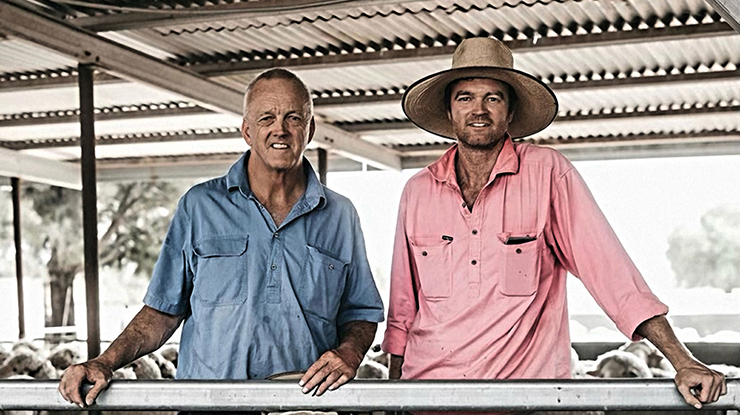 NSW sheep producers Rod and Nick Kershaw.
NSW sheep producers Rod and Nick Kershaw.
How forage brassicas boosted on-farm lamb production
Forage brassicas have earned a spot in the Kershaws’ mixed farming operation at Iandra, on the NSW south-west slopes.
Nick Kershaw and his father Rod run a prime lamb and wool enterprise, with a complementary cropping program designed to keep paddocks clean.
They try to avoid buying in feed, instead relying on pastures and grazing crops, making their own hay and storing grain at harvest.
Grazing program
Nick plants dual-purpose canola in late summer – February or March – and puts pregnant ewes out into paddocks in May, just prior to lambing. He locks up the canola in June and moves the ewes and lambs onto grazing wheat crops.
“We lamb in autumn in our pastures, so we’re quite reliant on our grazing crops to carry us through,” Nick said. “When lambs are dropping on the ground, that’s when ewes require the most feed.”
He locks the wheat up at the end of July and weans lambs in August. The nutritional requirements for the ewes drop off after weaning, so they can return to pastures, but at this point, the weaners need to maintain a high-quality feed intake to maximise weight gain.
Dry-time solutions
Prior to the run of wet years he’s experienced since 2020, Nick trialled forage brassicas as an option for these weaner lambs.
“During the drought years from 2016 onwards, we weaned lambs in spring and everything was drying out, so we didn’t have a lot of quality feed,” he said.
“We were looking to grow something which could be sown in early winter and be ready to wean our stock onto.”
The Kershaws trialled Greenland forage rape, Raphno and Hyola® 970CL, all sown at the end of winter.
“The weaners went really well – our wether lambs gained 250g/day on the Raphno and 320g/day on the 970. That’s fantastic for Merino lambs. Second-cross lambs might do even better.”
Multiple grazings
Nick likes the fact forage brassicas can be grazed heavily and, in favourable years, will give multiple grazings.
He grazes the autumn-sown grazing wheat at 25–30 dry sheep equivalent (DSE) per hectare, while canola is grazed at 30–40 DSE. In comparison, he crash-grazes brassicas in spring at 60–80 DSE.
“Initially we grazed it as we would dual purpose canola at 30–40 DSE, but it wasn’t enough – it needed to be stocked a lot more intensively or it will run up and go to head and the animals then don’t want to eat it.
“We get a lot of numbers on there, get a good graze, then move them off to somewhere else. We then spread urea before a rainfall event, and we can then graze it again.
“Depending on the season, you can get three, four or even five grazings, all the way through to summer.”
Because of the recent run of wet years – which meant Nick wasn’t chasing feed for his weaners – he hasn’t planted forage brassicas during this time.
However, once the seasons get back to a drier or even a more ‘normal’ pattern, he’ll reintroduce them.
“If we go into a hotter, drier year, I’ll go back to that system. Forage brassicas will always be there for us as an option.”
|
Lessons learnt
|



